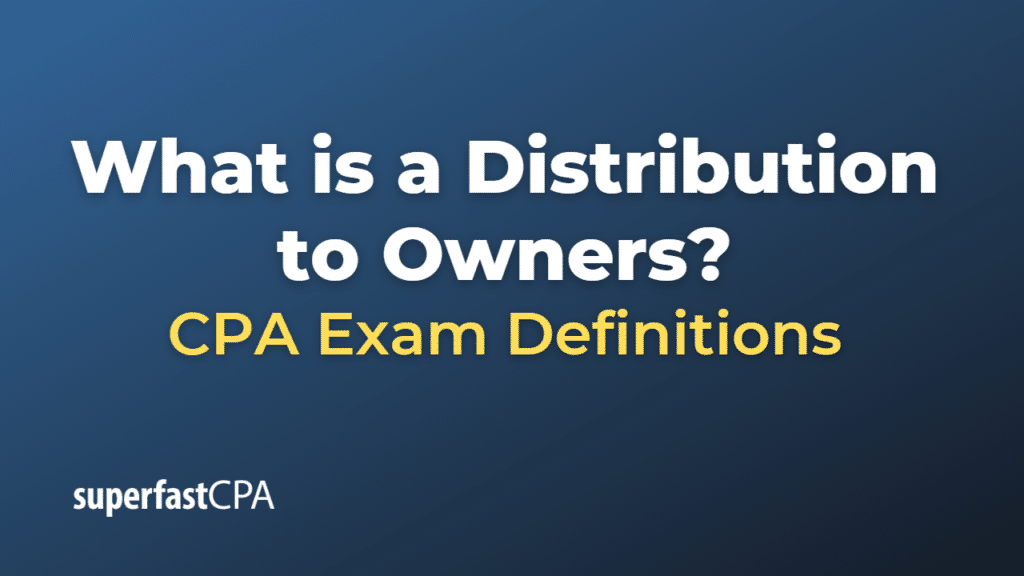Distribution to Owners
In accounting and business, a distribution to owners (or dividends) refers to a payment made by a corporation to its shareholders, usually in the form of cash, additional shares, or other assets. These distributions are a portion of the company’s profits that are returned to the shareholders, who are the owners of the company.
These payments are typically distributed according to the number of shares each shareholder owns. For example, if a company declares a cash dividend of $1 per share, a shareholder with 1,000 shares would receive $1,000.
Distributions to owners are a way for companies to share their profits directly with their shareholders. However, not all companies choose to distribute their profits in this way. Some, especially growth-oriented companies, may opt to reinvest most or all of their profits back into the company to fund further growth and expansion.
It’s important to note that distributions to owners reduce the company’s retained earnings, which is the accumulated net income of a company that is retained within the company until it is distributed to the shareholders or reinvested in the business.
The decision to make a distribution, and the size of that distribution, is typically made by the company’s board of directors. This decision will usually take into account the company’s profitability, its need for cash to fund operations and growth, and the expectations of its shareholders.
Example of a Distribution to Owners
Suppose that Excellent Enterprises Inc., a publicly traded corporation, has had a particularly profitable year. After covering all their operating expenses, capital expenditures, and debt obligations, they have excess profits. The company’s board of directors decides to distribute a portion of these profits back to the company’s shareholders.
They declare a cash dividend of $2 per share. This means that for every share of Excellent Enterprises Inc. that a shareholder owns, they will receive $2. So, if a shareholder owns 500 shares, they would receive a cash distribution of $1,000 (500 shares * $2 per share).
This is a direct form of returning profits to the owners of the company (the shareholders). However, as mentioned earlier, the decision to distribute dividends and the size of the dividend is determined by the company’s board of directors, based on the company’s financial condition, future cash needs, and the expectations of shareholders.
Remember, dividends are not the only form of distribution to owners. Companies can also return profits to shareholders through methods like share repurchases, where the company buys back its own shares from the market, effectively reducing the number of outstanding shares and increasing the value of remaining shares.













